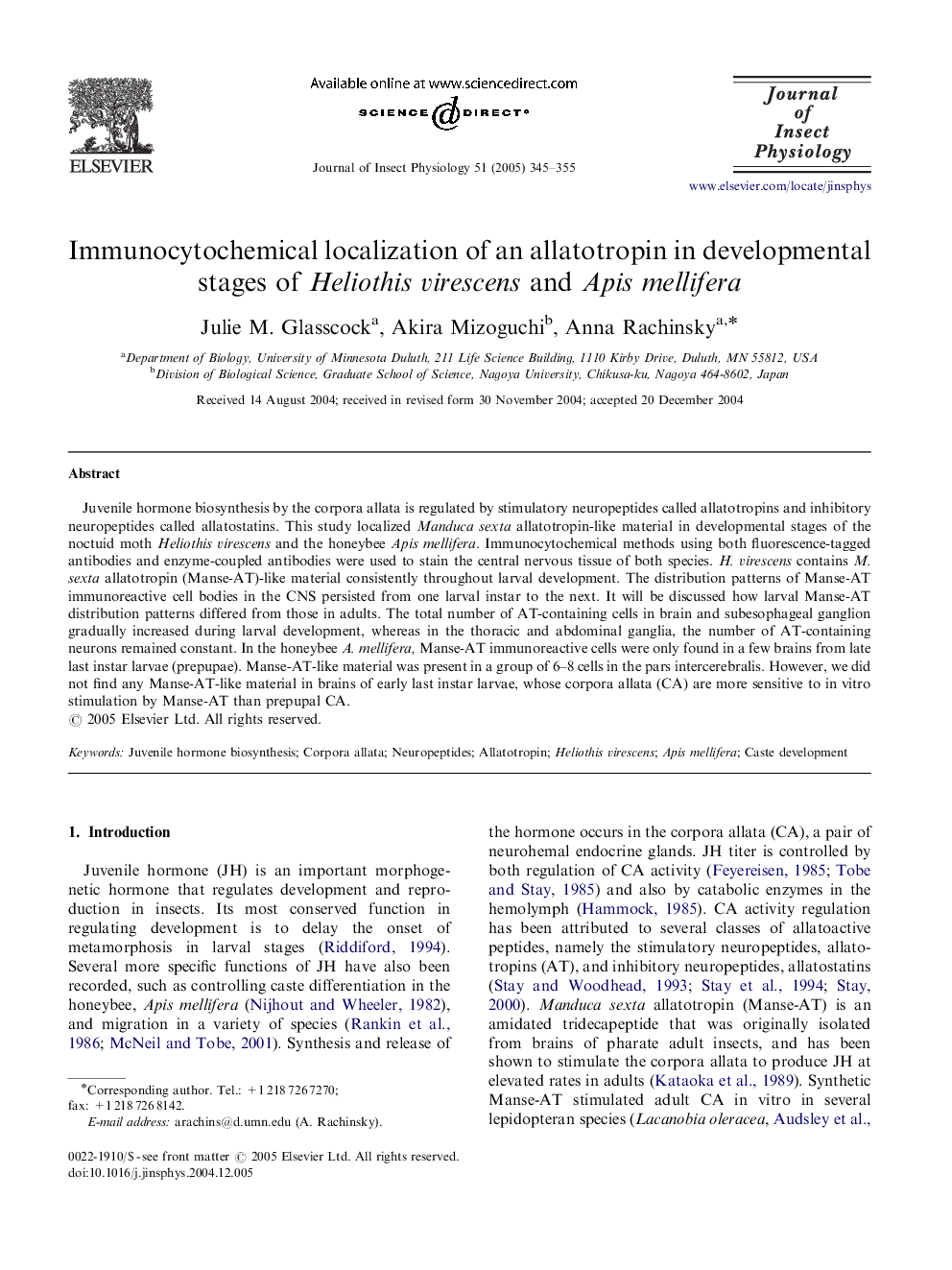| Article ID | Journal | Published Year | Pages | File Type |
|---|---|---|---|---|
| 9147899 | Journal of Insect Physiology | 2005 | 11 Pages |
Abstract
Juvenile hormone biosynthesis by the corpora allata is regulated by stimulatory neuropeptides called allatotropins and inhibitory neuropeptides called allatostatins. This study localized Manduca sexta allatotropin-like material in developmental stages of the noctuid moth Heliothis virescens and the honeybee Apis mellifera. Immunocytochemical methods using both fluorescence-tagged antibodies and enzyme-coupled antibodies were used to stain the central nervous tissue of both species. H. virescens contains M. sexta allatotropin (Manse-AT)-like material consistently throughout larval development. The distribution patterns of Manse-AT immunoreactive cell bodies in the CNS persisted from one larval instar to the next. It will be discussed how larval Manse-AT distribution patterns differed from those in adults. The total number of AT-containing cells in brain and subesophageal ganglion gradually increased during larval development, whereas in the thoracic and abdominal ganglia, the number of AT-containing neurons remained constant. In the honeybee A. mellifera, Manse-AT immunoreactive cells were only found in a few brains from late last instar larvae (prepupae). Manse-AT-like material was present in a group of 6-8 cells in the pars intercerebralis. However, we did not find any Manse-AT-like material in brains of early last instar larvae, whose corpora allata (CA) are more sensitive to in vitro stimulation by Manse-AT than prepupal CA.
Keywords
Related Topics
Life Sciences
Agricultural and Biological Sciences
Insect Science
Authors
Julie M. Glasscock, Akira Mizoguchi, Anna Rachinsky,
